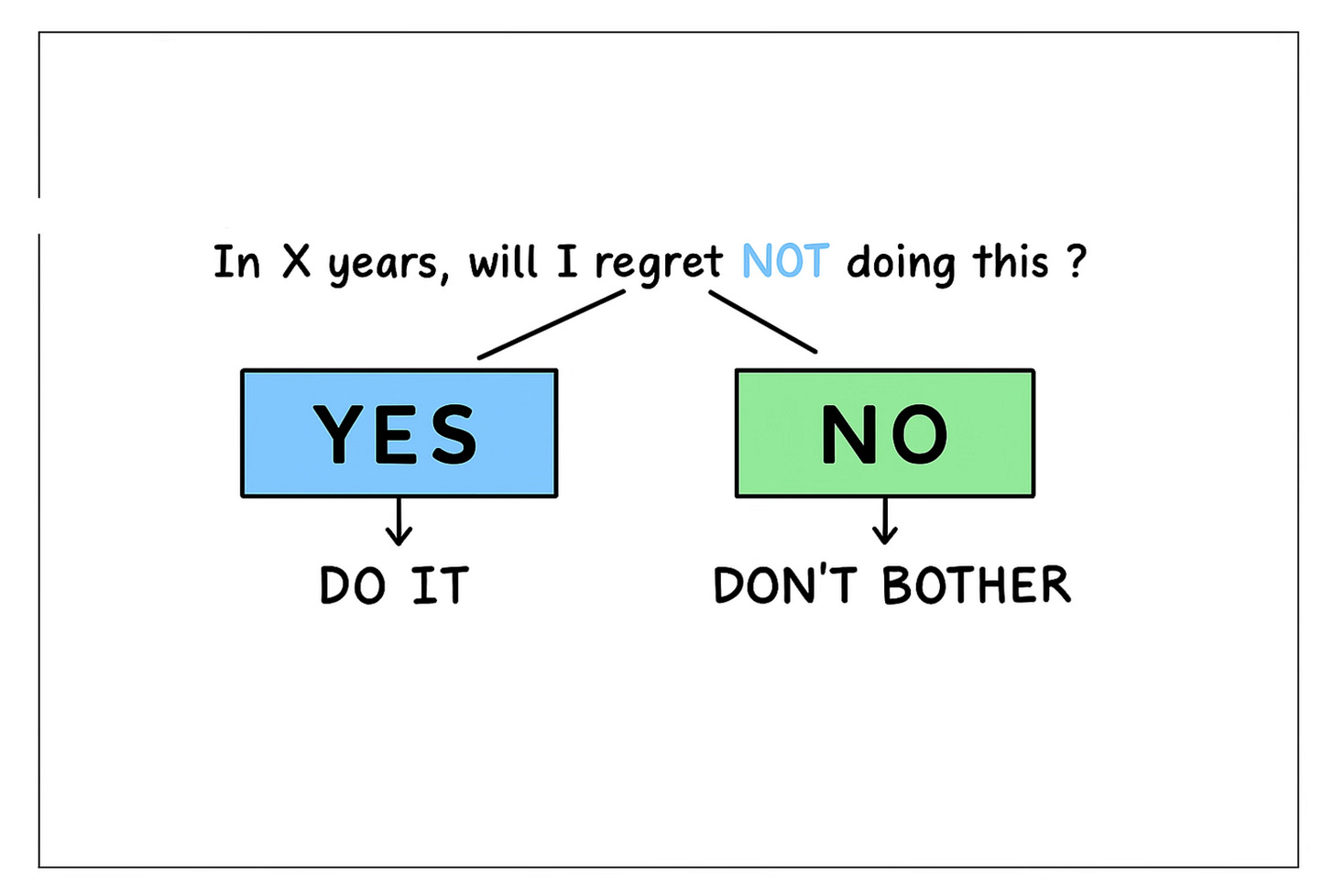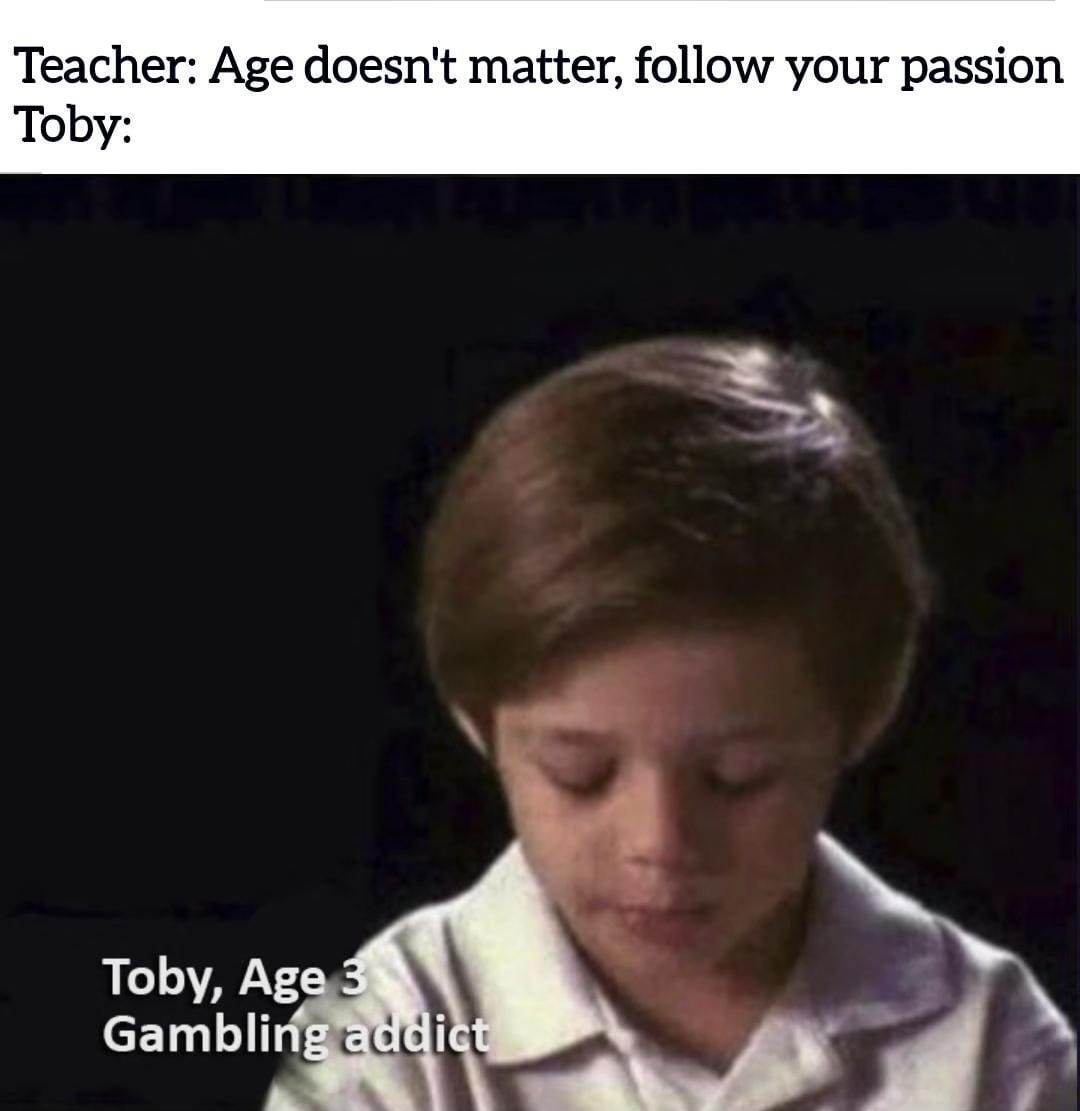Taking big decisions are hard. Really hard.
Should you quit your job?
Move countries?
Start a risky new business?
Jeff Bezos once faced a decision like that.
He was a successful Wall Street exec when he stumbled on a stat: the internet was growing at 2,300% a year.
He wondered — should he leave his career to start an online bookstore?
To decide, he used a simple mental model.
He imagined himself at 80, looking back at life.
Would he regret not trying?
The answer was yes, and he started Amazon.
That’s the Regret Minimization Framework (RMF).
It asks: “Will I regret not doing this when I’m 80?”
It’s bold. It’s elegant. It’s helped millions find courage.
But — it’s not always safe.
Use it wrongly, and it’ll literally destroy your life.
Because when taking a decision we WANT to take…
We forget the short term.
We exaggerate the dream.
We ignore risks.
We imagine an ideal future but miss today’s context.
That’s where AI can help.
It can bridge the knowledge gaps, reveal our blindspots, and help us take good long-term decisions under the light of right data.
Let’s see how.
Why RMF isn’t enough?
The Regret Minimization Framework pushes us to choose long-term fulfillment over short-term comfort.
It’s about stepping into the unknown, doing things that align with who we truly are.
However we, being humans, often:
Chase big dreams and ignore practical limits.
Downplay risks we don’t want to think about.
Overestimate our ability to bounce back.
Enter AI: An Unbiased Thinking Extension
AI can solve almost all of the above-discussed short comings of ours.
Tools like ChatGPT, with good prompts, can excel at doing what we struggle with:
Asking consistent, unbiased questions.
Organizing messy thoughts.
Surfacing blind spots.
Simulating outcomes.
When applied to RMF, AI can help you answer not just what you might regret not doing, but also what you might regret doing without preparation.
That difference matters — especially for entrepreneurs, leaders, and high-stakes decision makers.
The Problem with Only Following Your Gut
Imagine you’re considering leaving your stable executive role to launch a startup.
RMF might say: “Will I regret not starting this company when I’m 80?”
You say: “Yes.”
So you go for it.
But what if you:
Had a fragile financial runway?
Underestimated the impact on your family?
Were unaware of market shifts?
You might end up regretting the way you did it — even if the goal was noble.
RMF isn’t flawed — but it’s incomplete.
That’s where a structured conversation with AI can bring clarity.
Solution: RMF + AI = Balanced Boldness
Let AI walk you through the RMF — but with deeper layers.
Here’s a sample prompt you can use in ChatGPT:
Prompt:
“I’m considering a major life or career decision. Please guide me through Jeff Bezos’ Regret Minimization Framework, but include deeper questions about short-term risks, practical realities, and emotional clarity. Ask me one question at a time. At the end, give me a clear unbiased summary report.
Ask me:
What is the decision you’re considering?
What’s drawing you to it?
What’s holding you back?
What is your current situation (career, finances, health, family)?
What will you regret NOT doing when you’re 80?
What might you regret DOING if it doesn’t work?
Who could be affected if things go wrong?
What backup plans or financial cushions do you have?
Can you test this idea in a small, safe way?
What advice would you give a friend in your shoes?
Is there anything you’d like to share?”
This simple back-and-forth can be transformational.
AI doesn’t have emotions.
It doesn’t love your dream or fear your failure.
It just listens, asks, and organizes.
The result? You see your situation clearly — all of it.
Not just the dream. Not just the fear.
But the full picture.
The situation
The facts
The risks
The gains
The potentials
Next Steps:
Review the Output with Others
Share it with a mentor, coach, or partner. AI won’t give you approval — but it will give you the right questions to discuss.
Revisit After 24 Hours
Let it sit. Then review your answers again. You’ll spot new angles with a clear head.
Act in Steps
Your final action might not be a giant leap — it might be a safe first step. That’s still momentum.




